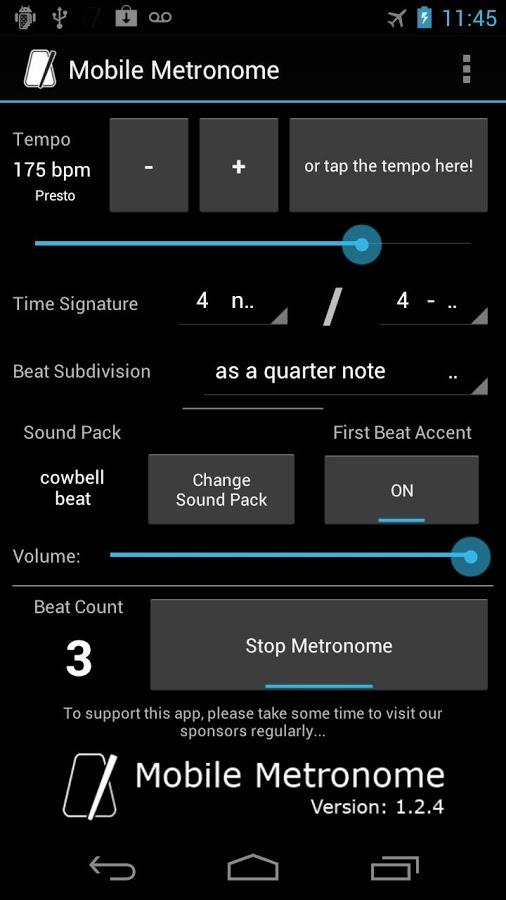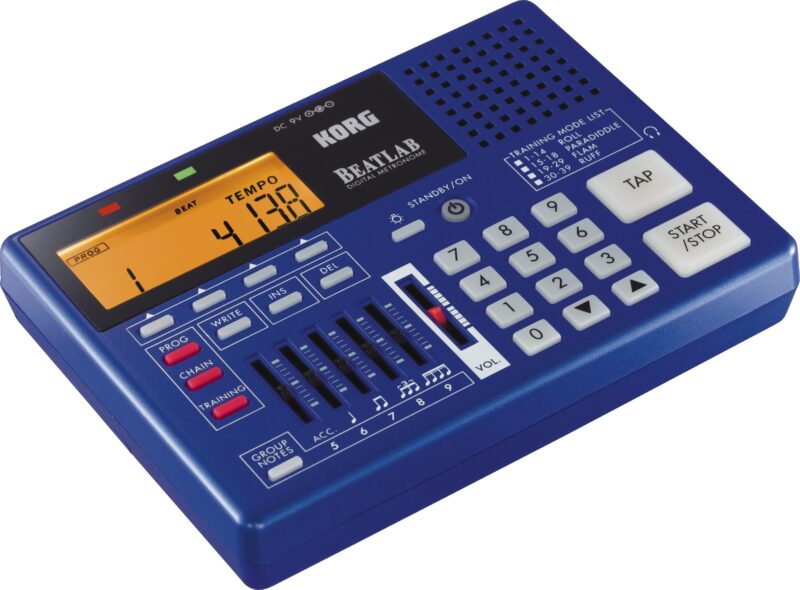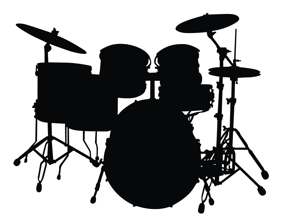1 – Operating a metronome’s functions
2 – What to DO with a metronome
3 – Recommended metronomes available
Ahhh the miraculously helpful device every drummer seems to want to claim as the ‘bane of their existence’. Drummers get really insecure and shy about using them, usually intimidated by the challenge of playing along with one successfully.
I’m here to say, it’s NOT scary OR even difficult. I’ll show you why.
The main challenge I believe drummers have been facing is, simply, not knowing hardly any WAYS to use a metronome. There are many – roughly divided into listening exercises and playing exercises, with several methods in each category.
But first the basics…
1- How to Operate A Metronome


Metronomes, whether as an app or a physical device, accomplish the same thing – they broadcast a steady sound.
This is useful for musicians because they can LEARN what actual machine-created perfection sounds like, and they can polish their playing to be as steady as the string of beeps, clicks, pops, or whatever pulse-sound the metronome is creating.
What’s even more useful is that you can of course change the speed (‘tempo’) of these pulses AND often add another faster layer of pulses that multiplies the first layer by 3, 4, or sometimes higher numbers as well. The faster pulses help you fine-tune the timing of your rhythms in a 16th note feel, an 8th triplet feel, a 6/8 feel, or other musical ‘feels’. (See the lesson on The ‘Feels’ Of Music / Spotify Playlists for more info).
Important Metronome Settings
- Time Signature
- Tempo
- Subdivisions (or specific rhythms)
- Measure Accent
Often, to be able to adjust the specific settings of a metronome, it’s necessary to understand a bit about the language of rhythm. In other words, vocabulary such as ‘time signature’ might not make sense unless you already know about the various sizes of notes and what they’re called. (Check out this lesson on Reading Rhythm Notation for more info).
Time Signature

Roughly, the time signature is the length of a measure. Each measure contains as many beats as the top number of the time signature, and each beat is worth a certain note value indicated by the bottom number (4 stands for ‘quarter notes’, 8 stands for ‘8th notes’, 16 stands for ’16th notes’). Thus 2/4 time means ‘two quarter notes per measure’, while 6/8 time means ‘six 8th notes per measure’.

Tempo
Tempo, measured in ‘bpm’ or ‘beats per minute’, is the standard measurement of speed. The only catch is, a beat can be equal to quarter notes, 8th notes, or 16th notes, depending on what the bottom number of the time signature says. So for example, in 6/8 time, 150 bpm means there are 150 8th notes per minute. In 2/4 time, that same tempo would indicate 150 quarter notes per minute.
Subdivisions
You don’t have to use these. You can leave the metronome only playing the ‘beat’ pulse – or you can make it sound faster, and multiply it by adding a smaller note value. For example, in 2/4 time, since the beats are quarter notes, you could add 8th notes to double the speed of the pulses, 8th triplets to triple the pulses, or 16th notes to quadruple the speed of the original pulses.
This is definitely where it comes in handy to know how note sizes relate to each other. (Check out this lesson on Reading Rhythm Notation for more info).
Measure Accent
This is another pulse layer you can add, much like the subdivisions (above) but a slower pulse instead of a faster one, that shows you where the beginning of each measure is.
For example, if your time signature is 2/4, the measure accent will beep every two pulses. If it’s 3/4, every three pulses. If it’s 5/4, every five pulses, and so on.
2 – What To DO With A Metronome
This advice is based on the goal of developing a good sense of timing as well as good execution of timing. Here are three easy exercises to use for now. If you want more ideas, there will be training modules coming out in the near future that will focus on this topic!

1 – LISTEN – IMAGINE
Set metronome functions however you want – any tempo, time signature, etc. First listen to the metronome carefully for 20 seconds and try to memorize the exact speed of it, then pause it for 20 seconds and try to imagine the sound of it so well that you can ‘listen’ to it that entire time. Alternate these two steps until you notice some ability gained.

2 – PLAY – LISTEN
Set metronome functions however you want – any tempo, time signature, etc. First play along to the metronome’s pulses as accurately as you can for 20 seconds, using any pattern of sticking or just one stick. Then stop playing and listen, to see if the metronome sounds faster / slower / the same speed. Alternate these two steps until you notice some accuracy gained.

3 – PLAY RHYTHMS, METRONOME ON – OFF
Set metronome functions however you want – any tempo, time signature, etc. Play along with any short rhythmic phrase of your choice (ideally made from some slower notes and some faster notes, for example 8th notes and 16th notes) for 20 seconds. Then pause the metronome and play the rhythm again, as close to the exact same speed as you can, for another 20 seconds. Alternate these two steps until you notice some ability gained.
Now go practice your timing!

